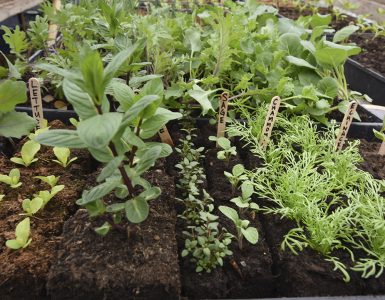This week I was part of a roundtable discussion with Ontario’s Minister of Agriculture about how to attract and retain young people in rural communities. Much of the discussion revolved around jobs and services (like internet access or community services such as schools).
But the discussion also revealed some bigger structural problems in the way that government policy treats rural communities.
Kingston City Councillor Richard Allen (District 1, Countryside) pointed out that municipalities get funded for growth. If they increase their population, if they build more infrastructure, they get more money from higher levels of government.
Areas that don’t increase their population don’t get much money, making it harder to provide community services, making it harder to retain people. It’s vicious cycle.
If we actually want rural communities to thrive and be attractive to young people, we have to change how we think about farming and rural communities.
Since the Second World War, much of Canada’s agricultural policy has been built on the idea that bigger is always better. If one farmer can plough a hundred acres, that’s okay, but it’s better to plough a thousand acres, or ten thousand. Canada’s agricultural policy has encouraged that, meaning bigger farms, bigger tractors, bigger everything.
The result, especially in the prairies, has been rural depopulation as farms get bigger, and farmers get farther apart. The same pressures are at work in much of Ontario.
As farmers get fewer and farther apart, rural populations shrink, schools and hospitals close, hardware stores shut down, government services get cut. Villages and hamlets wither.
The prevailing attitude of economists in the last 50 years is that this is a good thing – that if one farmer can plough 10,000 acres, they are doing the work of 100 old-style farmers. They’re more efficient, goes this way of thinking, and efficiency is good.
Unfortunately, as it turns out, gigantic monoculture farms are not very efficient in their use of energy, water, and soil. Huge fields growing single crops require a lot of inputs like pesticides, fertilizers, and diesel fuel for the heavy equipment. The ecological expenses are enormous.
Our farm, in contrast, strives to be sustainable. We have a lot of staff, which means a lot of farmers and farm workers concentrated especially on a few acres of garden. In the gardens we actually have more than one farmer per acre.
In the old way of thinking, this is inefficient. In the old way of thinking, you should be counting in acres per farmer, not farmers per acre.
A fresh way of thinking is to recognize that small ecological farms are good at creating jobs. And at bringing in revenue—our gardens, which feed hundreds of families, generate far more money per acre than a monoculture cash crop.
That revenue also has a more beneficial impact on our community, because local dollars circulate here.
A key problem with mass-scale conventional agriculture is that farms make more gross income overall, but farmer net income has stagnated. Some enormous farms may bring in millions of dollars each year, but virtually all of that money goes right back out again to buy equipment, seeds, pesticides, and so on, from companies like Monsanto.
During the roundtable, Minister of Agriculture Jeff Leal explained with pride that the agri-food sector in Ontario contributes $35 billion to the province’s GDP.
But so much of that $35 billion in agri-food GDP goes right back out to the corporate headquarters of Monsanto, or Cargill, or John Deere, and to wealthy investors in the US or overseas.
Money spent on local farmers, in contrast, circulates in the community. Every dollar spent on local food generates several more dollars for the local economy. And those dollars can provide meaningful jobs.
That’s the kind of approach we need if we actually want to revitalize rural communities, attract young people and fight climate change. And that’s the kind of approach Ontario should prioritize.







